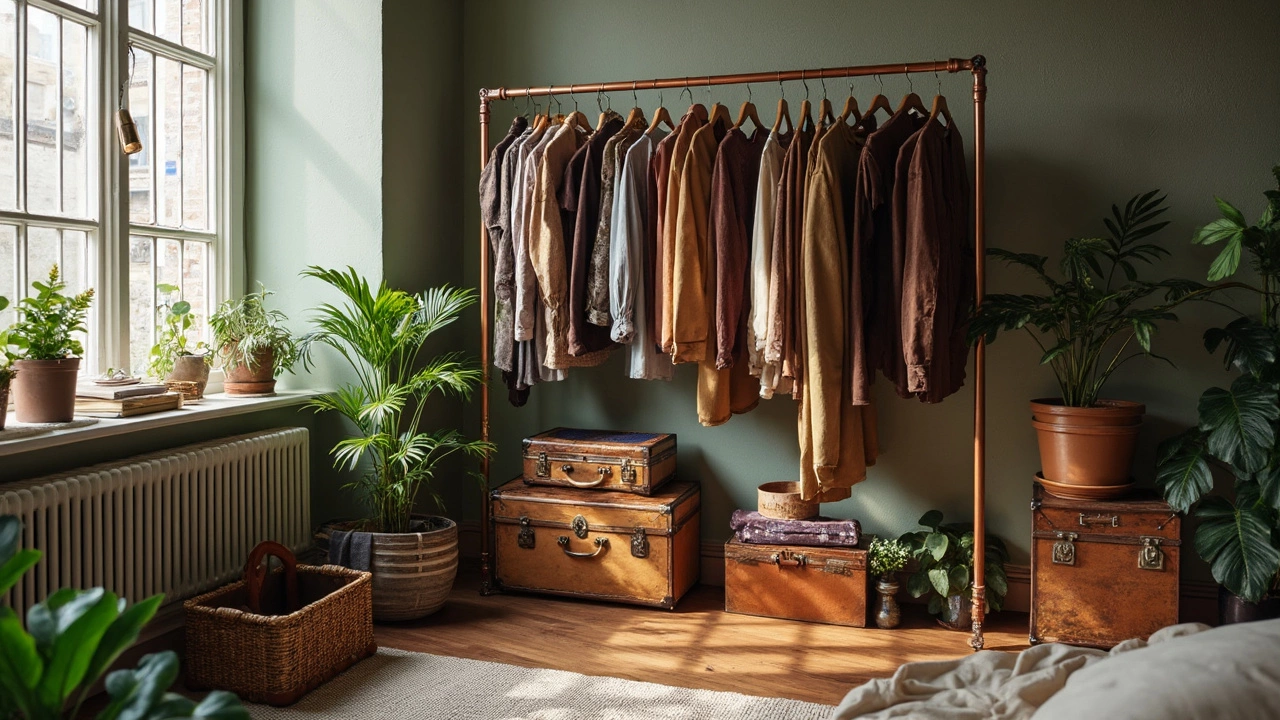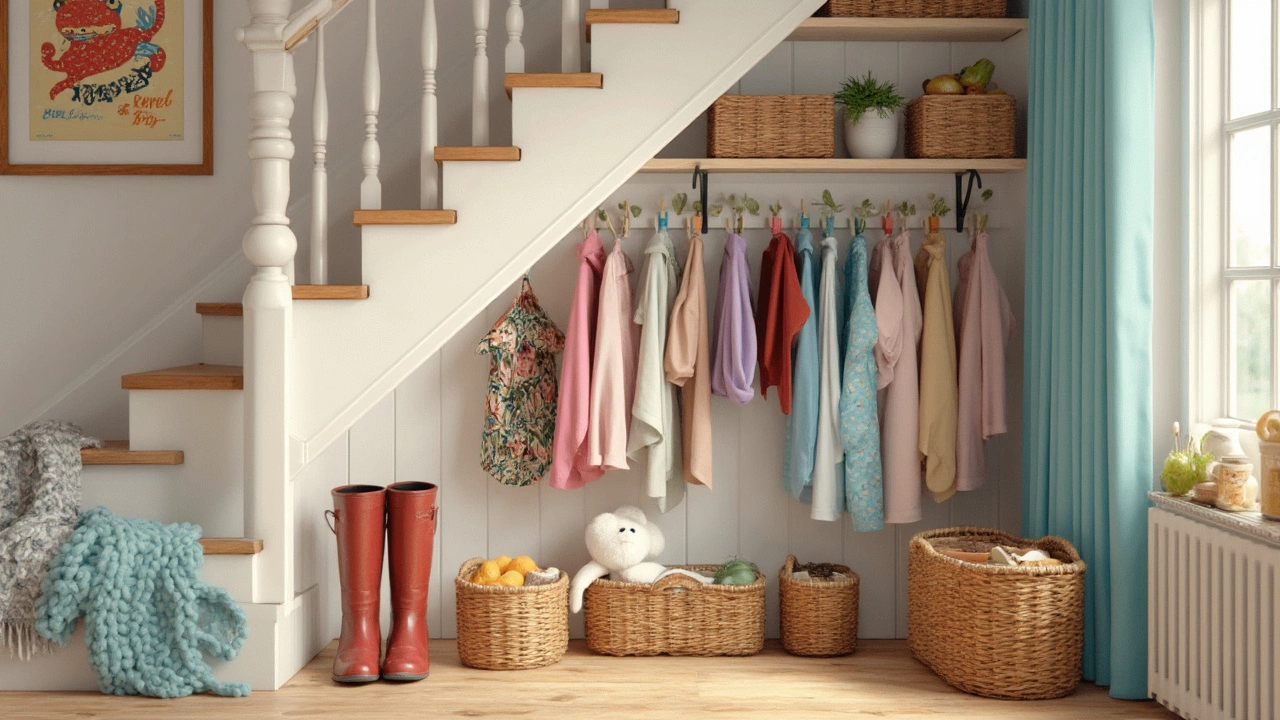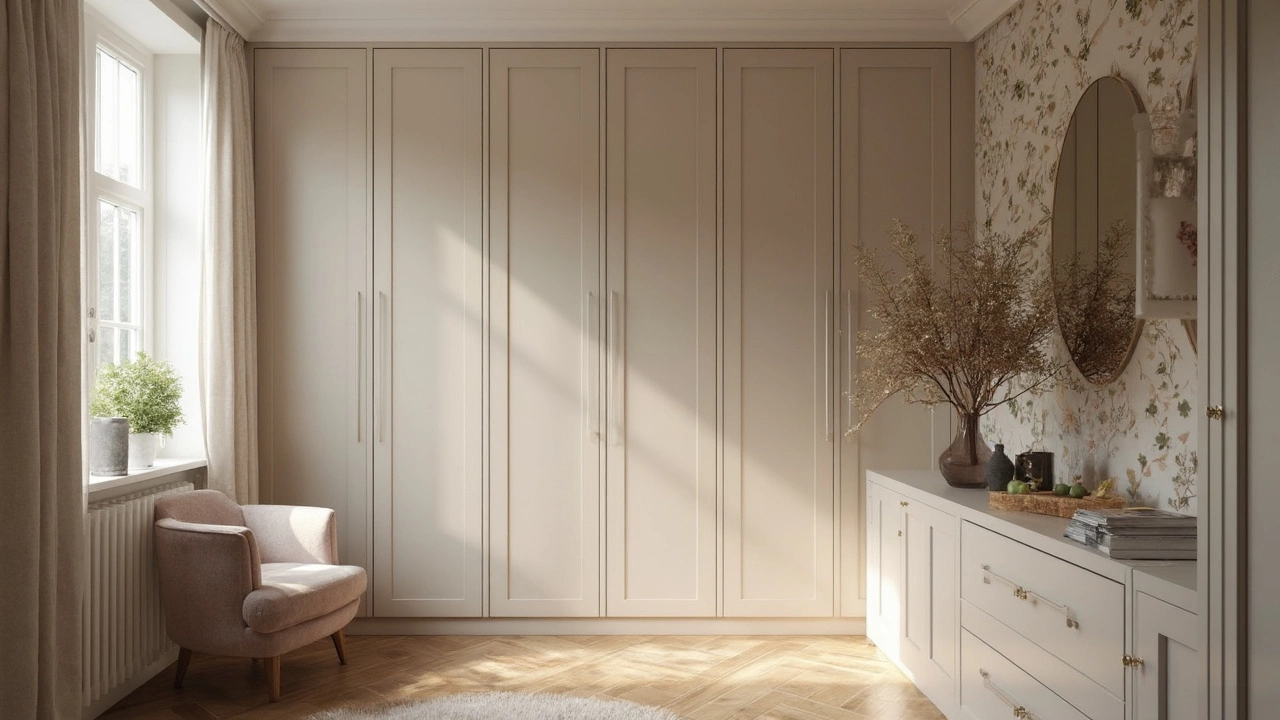
You walk into a friend’s home and spot this bold piece of furniture standing tall against the wall—shelves, sliding doors, maybe a mirror or two. You want to compliment it, but the word 'wardrobe' feels a bit tired or just plain wrong for what you’re seeing. Turns out, there’s a whole world of words and styles waiting in the wings, each carrying its own quirky backstory and vibe. And honestly, the names we use say a lot about how we live and organize our worlds, down to how we hide our laundry pile or display our latest thrifting haul.
The world’s been stashing away clothes since ancient times, but 'wardrobe' isn’t the only label out there. If you want to switch things up, try using 'closet.' In the U.S. and Canada, closet is the go-to, even if it’s built into the wall or taking up a corner of the bedroom. 'Armoire' is another mood entirely—think French country, intricate carvings, and a sense of romance. This term dates all the way back to medieval times when the wealthy needed something fancy and lockable for their linens and armor.
Now, if you wander into antique shops or older homes in England, you might hear 'cupboard.' Brits once used this for almost any storage with doors, not just for clothes. 'Chifforobe' mixes 'chiffonier' and 'wardrobe,' a clever American hybrid for pieces that combine drawers and a hanging space—pretty ingenious for small rooms. In Australia and New Zealand, 'robe' is a common shortcut, while 'locker' and 'locker room' pop up when you’re talking about communal spaces or sports facilities.
Some people even use words based on furniture construction or purpose: 'armoire' if it’s freestanding and ornate, 'cabinet' if it’s simple and square, 'dresser' if it’s mostly drawers, or 'bureau' for more classic, European styles. Then there’s the modern set—people embrace open 'clothing racks' or call free-form structures a 'clothes rail,' 'clothing system,' or 'wardrobe system.' IKEA and similar brands turned 'PAX system' or 'storage solution' into household phrases. Even poetic types sometimes call it a 'garment chest,' 'linen press,' or 'apparel cupboard.'
Each label brings a different flavor, tied to region, style, or even the function you want to highlight. That’s why picking a word doesn’t just freshen up your home vocabulary—it says something fun about your tastes and the story you want your home to tell.

People’s tastes change fast, and with them, the language around their homes does, too. The classic 'wardrobe' ruled for ages, but built-in closets changed everything in the early 20th century, especially in newly built American homes. Suddenly, 'closet' became as common as 'bathroom.' Homes designed earlier rarely came with closets—owners relied on armoires, wardrobes, or even just hooks lined along the wall. According to a National Association of Home Builders report, by the late 1950s, nearly 90% of new homes in the US included multiple closets, which totally shifted vocabulary and expectations around storage.
'Armoire' saw its renaissance with the rise of French-inspired decor in the late 1990s and early 2000s, thanks in part to magazines glamorizing Parisian living. On the flipside, minimalism brought in words like 'open rack' and 'modular system.' Closet companies began advertising 'wardrobe solutions,' merging tech, design, and lifestyle in one breath—a wild twist compared to the old creaky chest in your grandma’s attic. Stores popularized their own terms: IKEA’s 'PAX' system is so well known that among a certain crowd, 'PAX' is shorthand for any huge, multi-panel storage unit.
If you dig through real estate listings, words like 'walk-in closet,' 'built-in storage,' or 'master suite wardrobe' are now selling points. In apartments where space is tight, 'compact wardrobe' or 'mini dresser' pop up. In fashion circles, bloggers like to show off their 'clothing rail' or 'garment rack,' all arranged for max aesthetics. The trend of naming furniture after function rather than just form has exploded, giving birth to 'media armoire' (for TVs), 'wardrobe tower,' or even smart 'closet pods.'
Changing times and tastes even influence what gets built. Small homes or studio apartments often have 'convertible storage'—benches with hangers inside, beds with secret drawers, or walls that pivot to reveal a hidden clothing nook. If a designer needs global appeal, they’ll market the same thing under different names depending on where you live.

Let’s talk practical next steps, since storing your favorite jackets and socks goes way beyond what you call the unit itself. You can make any piece—no matter the name—work harder and look sharper with a few tricks.
First, consider your space. Not everyone’s got a walk-in closet, but even a narrow 'armoire' can hold much more if you add extra rods, hooks, or shelves inside. Use baskets for small stuff and pull-out trays for jewelry—making daily routines easier. If you’re going for a 'clothing rail,' use matching hangers to calm visual clutter, and try a bottom tier for shoes, so nothing piles up on the floor.
Some love the look of a traditional 'dresser,' but struggle keeping things neat. File-folding t-shirts lets you see everything at a glance. Drawer dividers for socks or underwear are a game-changer. Got an old school 'linen press?' Label each section, or dedicate certain drawers for out-of-season stuff. If you’re living small, a 'modular closet system' that adapts with your lifestyle—adding drawers when you need more, or swapping in shelves for bulkier coats—can save a ton of headaches over time.
Function matters just as much as fashion. If you’re a heavy thrifter or have the shopping bug, the 'one-in, one-out' rule keeps things in check: every time you add a shirt, donate something else. Open closets or racks can push you to keep things tidy, since everything’s on display. And style can match substance if you play with colors, line up shoes just so, or add a mirror to make a dark corner feel like a proper boutique.
If you’re worried about mold or musty odors, cedar blocks or lavender sachets work wonders in any storage type. And bonus tip: install LED strip lights for dark corners, whether it’s a built-in closet or a thrifted armoire. Got a rental? Free-standing garment racks on wheels can follow you from place to place, for ultimate flexibility. For parents, modular wardrobes with adjustable rods grow with your child, so you’re not buying every few years.
| Furniture Name | Main Feature | Most Common Region |
|---|---|---|
| Wardrobe | Freestanding; doors, hanging space, shelves | Europe, Global |
| Closet | Built-in; usually with door or curtain | USA, Canada |
| Armoire | Ornate, large, often vintage/antique | France, USA |
| Chifforobe | Mix of drawers + hanging space | Southern USA |
| Clothing Rack | Minimal, open, portable | Urban/Global |
| Dresser/Bureau | Mostly drawers, no hanging | USA, UK |
| Linen Press | Drawers/shelves for linens | UK, Australia |
Wardrobe alternatives can add not just function, but flair—use the right word and storage hack, and your home feels a little fresher, your style a little more personal. One last tip? Don’t be afraid to mix and match: call it an armoire, then paint it neon green and toss in some LED strips and baskets. Nobody said storage had to be boring or sound the same in every room.
Write a comment